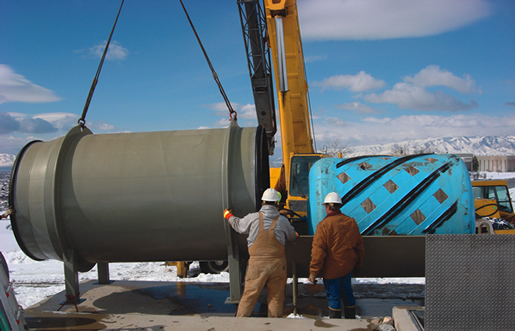
Have you ever wondered how pipelines stay clean, efficient, and in good working condition? The answer lies in a specialized method known as pipeline cleaning, and it’s a critical part of maintaining the integrity of various industries’ infrastructure.
Process of Pipeline Cleaning
Pipeline cleaning, commonly known as pigging, is a method employed to clean, inspect, and maintain pipelines. The “pipeline pig” is the central player in this process of pipeline cleaning – a cylindrical, specialized device that is inserted into the pipeline and travels through it. Unlike the cute farm animal, this pig is a versatile tool designed to perform a range of tasks.
Here's how the pipeline cleaning process works
- Pipeline Preparation: Before the pipeline cleaning process begins, it’s essential to prepare the pipeline. This involves ensuring that the pipeline is ready for the pig’s insertion. Adjustments are made to any necessary valves and fittings, and the pipeline is thoroughly flushed to remove any excess product or contaminants.
- Launching the Pig: Once the pipeline is ready, the pipeline cleaning process commences with the introduction of the pig into the pipeline. It’s akin to sending an explorer into the unknown. Typically, the pig is inserted into the pipeline through a pig launcher or launching station. This launcher provides the initial push required to propel the pig into the pipeline.
- The Pig’s Journey: As the pig enters the pipeline, it embarks on its journey, pushed along by the product or a suitable propellant, such as air or water. The design and purpose of the pig determine its specific journey. Some pigs are equipped with brushes to scrub away deposits, while others are fitted with sensors for inspection. The pig effectively cleans the inner walls of the pipeline, removes debris, and can even detect defects or irregularities.
- Receiving and Inspection: At the end of its journey, the pig is received at the receiving station or pig receiver. This is where the pig’s performance is evaluated. If it was a cleaning pig, it would have effectively removed contaminants, ensuring a clean and smooth inner surface. If it was an inspection pig, it would have gathered valuable data about the pipeline’s condition.
The Benefits of Pipeline Cleaning for Various Industries
Pipeline cleaning or pigging finds applications across a multitude of industries. In the oil and gas sector, it plays a crucial role in maintaining pipeline efficiency by cleaning out buildup and ensuring infrastructure integrity. In the food and beverage industry, it prevents cross-contamination, safeguarding product quality. The pharmaceutical industry employs pipeline cleaning for sanitation and product safety, while the chemical industry relies on it to maintain product quality and purity.
Why Choose Flowmore for Pipeline Cleaning
Flowmore, with its years of experience, offers comprehensive solutions in the field of pipeline cleaning. When you choose Flowmore for your pipeline cleaning needs, you benefit from:
- Decades of Experience: Flowmore boasts a wealth of experience in pipeline cleaning, ensuring reliable and efficient solutions.
- Comprehensive Solutions: They provide a range of versatile pigging tools, from smart pigs to gel pigs, tailored to your specific needs.
- Proven Industry Success: With a track record of serving high-profile brands, Flowmore contributes to cleaner, more efficient operations across diverse industries.
- Environmental Responsibility: Flowmore's pipeline cleaning process minimizes waste and emissions, promoting environmental sustainability.
- Client-Focused Approach: Flowmore prioritizes client satisfaction, working closely to deliver tailored solutions that maintain pipeline cleanliness, integrity, and efficiency.
In conclusion, the pipeline cleaning process, often referred to as pigging, is vital for the maintenance of various industries. Flowmore, with its extensive experience and client-focused approach, stands out as a leading service provider in this field. If you’re seeking efficient pipeline cleaning solutions, consider partnering with Flowmore to ensure the cleanliness, integrity, and efficiency of your pipelines.

